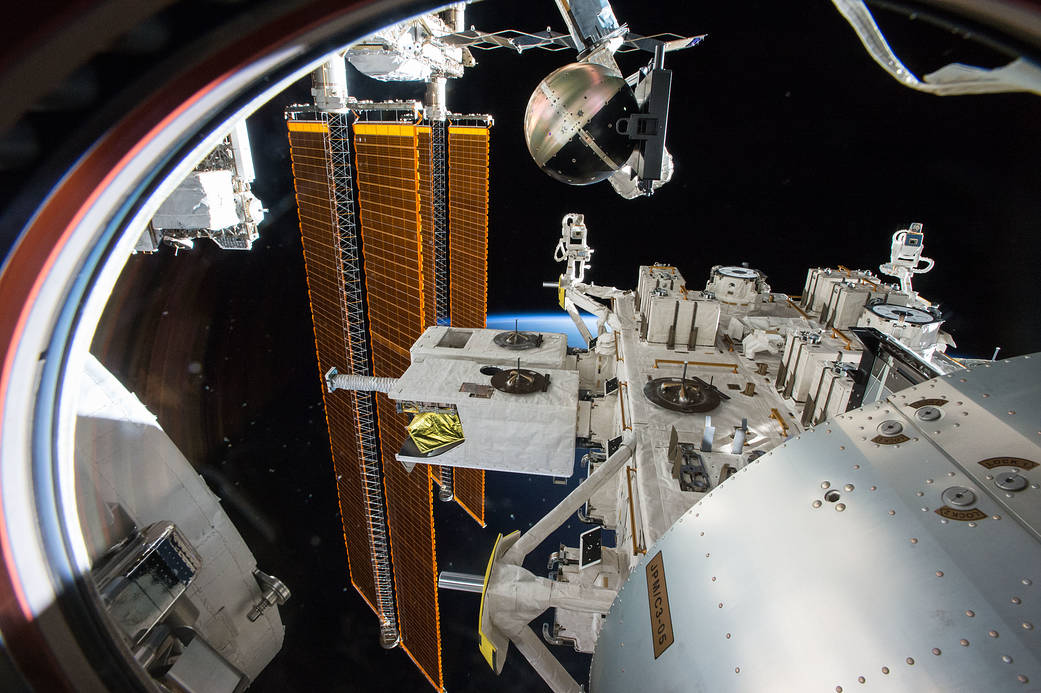
Equipment and data from the SpinSat investigation returns to Earth today, May 21, 2015, with splashdown of SpaceX’s Dragon cargo spacecraft following its release from the International Space Station’s robotic arm at 7:04 a.m. EDT. This Nov. 28, 2014 photograph by NASA astronaut Terry Virts captures the predeploy of SpinSat, which was launched into orbit from the station through the Cyclops small satellite deployer, also known as the Space Station Integrated Kinetic Launcher for Orbital Payload Systems (SSIKLOPS).
The SpinSat study tested how a spherical satellite measuring 22 inches in diameter moves and positions itself in space using new thruster technology. Researchers can use high-resolution atmospheric data captured by SpinSat to determine the density of the thermosphere, one of the uppermost layers of the atmosphere. With better knowledge of the thermosphere, engineers and scientists can refine satellite and telecommunications technology.
Image Credit: NASA




























